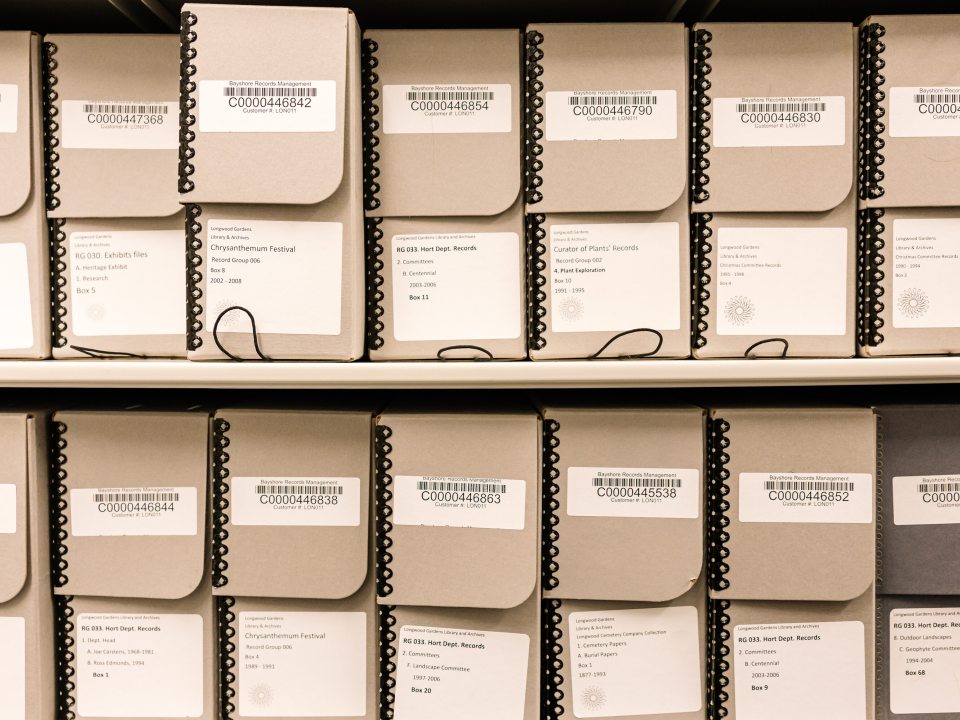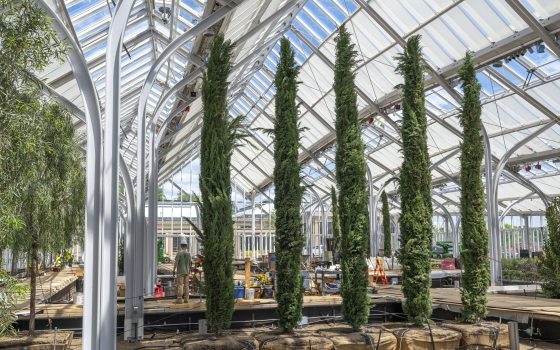
As our garden expansion continues to take shape and as our cultural landscape evolves, we are delighted to share with you a few of the many facets of this incredibly detailed project … so you can see true beauty in the making.
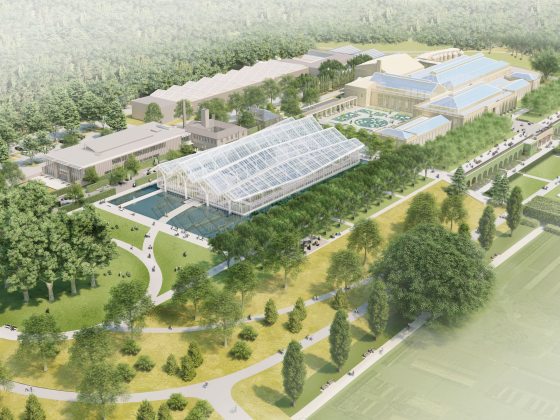
Longwood Reimagined Opens November 22, 2024
With the realization of our sweeping reimagination of 17 acres of our Conservatory and grounds, opening November 22, 2024—we are honored to enhance, steward, and preserve one of the world’s most important collections of gardens and glasshouses.
The use of fallen trees is just one sustainable practice that is part of our Longwood Reimagined project. Learn about what other practices we are incorporating—and more about The Challenge Program—in this video by Freshfly.
The Project Unfolds
As we draw ever closer to opening Longwood Reimagined in the fall, work on the West Conservatory continues. The extraordinary design by WEISS/MANFREDI calls for the 32,000 square-foot building to seemingly float on water. A vital component of that design are the pools that surround the structure and will offer dazzling reflections of the building’s unique steel formation and roofline. This month we will put the finishing touches on the 19,300 square feet of exterior pools that surround the West Conservatory, with the goal of filling them later in September. The 8,200 square feet of interior water features are slated to be filled in late August. We can’t wait to share this beautiful creation with you!
This week we began installing clivia—one of the featured plants in our new West Conservatory—into their new home! Native to South Africa and a member of the Amaryllis family, clivia are known for their large umbels of orange, yellow, red, or even green flowers that stand above shiny, deep-green strap-like foliage that makes the plants attractive even when not in bloom. Our long history with clivia includes the release of 6 named cultivars as part of our breeding program that began in 1976. The new display will feature a number of those releases, including the orange-hued ‘Longwood Sunset’ and ‘Longwood Sunrise’ and the rarer yellow-hued ‘Longwood Debutante’ and ‘Longwood Fireworks’. We will supplement with other varieties, creating a colorful sweep when they bloom in late winter. In all, more than 600 clivia will greet you when we debut this amazing garden November 22.
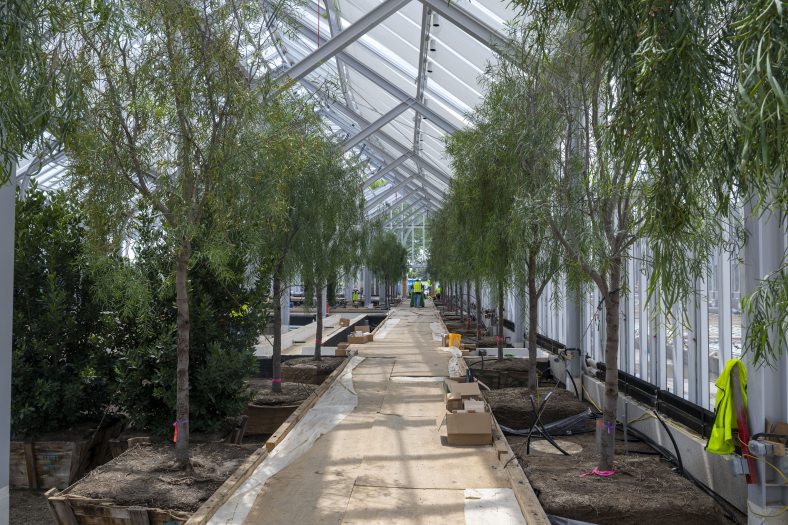
This month we are planting the permanent plants in our West Conservatory. From willow acacias to Italian cypress to espaliered citrus there are 60 species in all (with 90 more species of seasonal plantings to come). Placing and planting 15-foot-tall acacias and 20-foot-tall cypress is no easy feat. Each specimen is carefully selected and positioned, in consideration of its neighboring plants, to create the design’s desired effect. Once the large plants are placed, we will begin to install the mid-story (or medium-sized plants) and conclude with the smaller bedding plants. In all, more than 3,500 permanent plants and more than 2,500 seasonal plants (with up to 168 hanging baskets!) will grace this amazing Mediterranean-inspired garden.
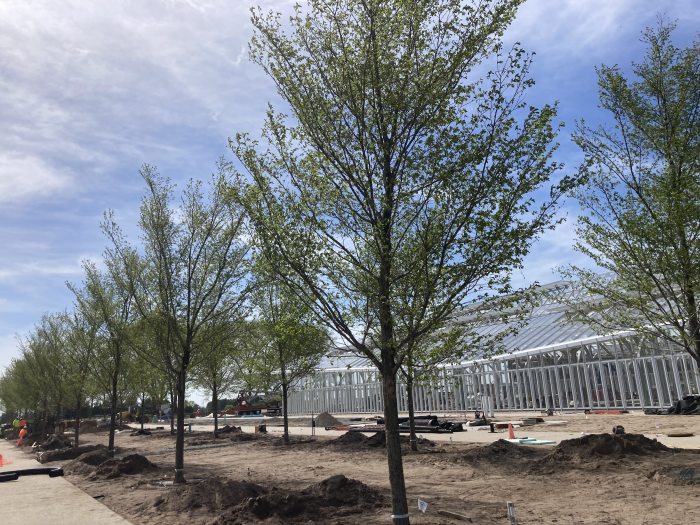
We have begun planting more than 100,000 sq. ft. of new meadow landscape on the project site, including a combination of seeding with a meadow mix, 70,000 plugs of little bluestem (Schizachyrium scoparium), and fine fescue sod. We are also planting an allée of 28 Accolade® elm trees (Ulmus davidiana var. japonica ‘Morton’) that will continue the grand promenade that stretches from east to west in front of our conservatories. These vigorous elms, which are now about 25 feet tall and will reach 50-70 feet tall, were selected for their upright arching branches and glossy dark green foliage that turns a brilliant yellow in fall. This variety is also disease resistant, including to Dutch elm disease. Later this week we will install soil in the West Conservatory, all in preparation for planting the Mediterranean-inspired garden!
We have begun to rebuild the Cascade Garden, which is the only extant garden in North America by famed Brazilian landscape architect Roberto Burle Marx. This is the first known example of landscape preservation including the relocation and reconstruction of a historic garden. In the coming weeks, we will begin to reinstall hundreds of pieces of the original schist that adorned planting beds and garden walls. In the summer, many of the plants will be relocated from their temporary home at Longwood back into the Cascade Garden, with new plants added to complete the tropical rainforest experience originally conceived by Burle Marx. We are proud to be working with WEISS/MANFREDI, Reed Hilderbrand, Burle Marx Landscape Design Studio and a panel of landscape preservation experts in this extraordinary effort.
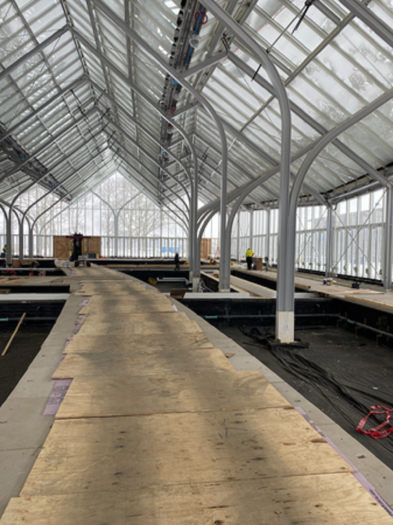
This week, work is finishing on the pathways inside our new West Conservatory before we turn our attention to pouring the slabs for the interior water features. The Cascade Garden is also making tremendous progress, with construction of the interior walls underway. In the coming weeks, we will bring back the stones used in the original Cascade Garden and recreate the hardscape. Prior to dismantling the original garden, scans were taken of each stone and their location; they were numbered, removed, cleaned, tagged, and barcoded; and will now be returned to recreate—stone-by-stone—the beautiful stonework that was an important part of the original Burle-Marx design.
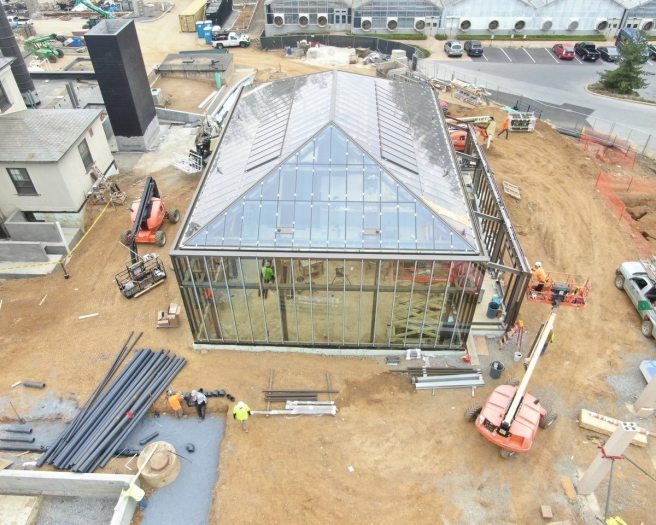
The structural steel is complete and glass installation is nearly finished in the 3,800-square-foot jewel box that will house our reconstructed Cascade Garden. Inspired by South America’s rainforests, Roberto Burle-Marx (1909-94) designed our original garden with verdant vines ascending columns and rock walls, bold foliage, and numerous waterfalls. To help ensure that plants thrive, the glass is slightly tinted and has special coatings to reduce light transmission and heat gain, since these understory plants normally grow in shady conditions. The heating and fogging systems being installed will create an even more optimal environment for plant growth. About 1,500 new plants for the Cascade Garden arrived onsite this week, including earth-stars (Cryptanthus), other colorful bromeliads, and more. Those will join the plants we kept from the original garden as we begin planting in April 2024.

We planted three Atlas cedars (Cedrus atlantica) adjacent to our new 1906 restaurant and Fountain Room event space. These three trees join more than 30 existing Atlas cedars throughout our Gardens. Currently measuring 25-30 feet tall, the trees are slower-growing but will eventually reach 40-60 feet in height with wide-spreading, graceful branches. We are also installing nearly 43,000 square feet of sod on the Conservatory Overlook and outside the new 1906 restaurant and Fountain Room event space. In the months ahead, a series of courtyard gardens will emerge around the new West Conservatory and The Grove building that will include 300 trees, 670 shrubs, and some 10,000 perennials!
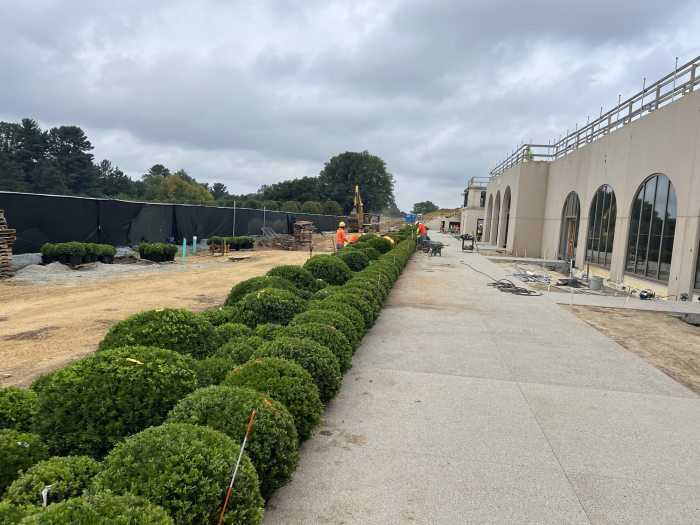
Last week we planted 765 boxwood in front of what will be our new 1906 Restaurant and Event Space. The cultivar, Buxus NewGen Independence®, was selected for its leafminer and blight resistance characteristics and its similar appearance and growth to Buxus microphylla ‘Green Beauty’ found in the Main Fountain Garden. In the coming years, the boxwood, which came from Virginia-based nursery Saunders Brothers, will be trimmed and shaped by our talented horticulturists to match the billowy design style of the boxwood throughout the Main Fountain Garden.
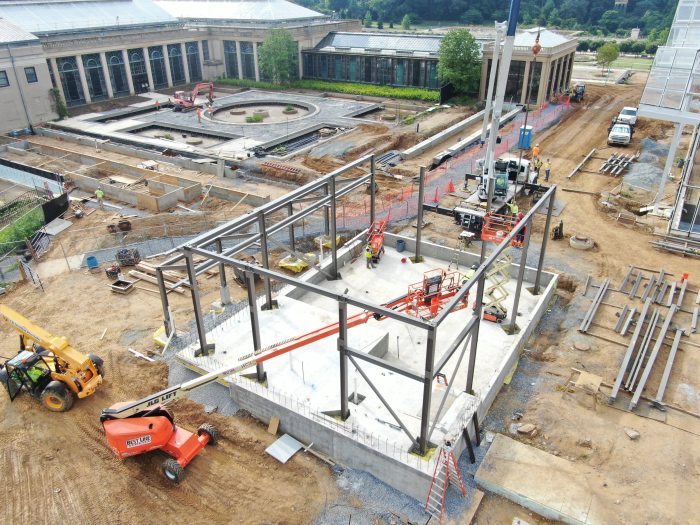
This week we began lifting steel for the new glass structure that will house our beloved Cascade Garden. Originally designed by acclaimed Brazilian landscape architect Roberto Burle Marx, our Cascade Garden is the only remaining Burle Marx design in North America. We have worked with a team of scholars, preservation experts, and the Burle Marx Landscape Design Studio to preserve and move the garden into this new 3,800-square-foot jewel box that will give the plants more room to continue to grow and flourish. More than 27 tons of domestic steel will be used to construct the house. We expect to begin installing glass later this summer and begin replanting the garden in spring.
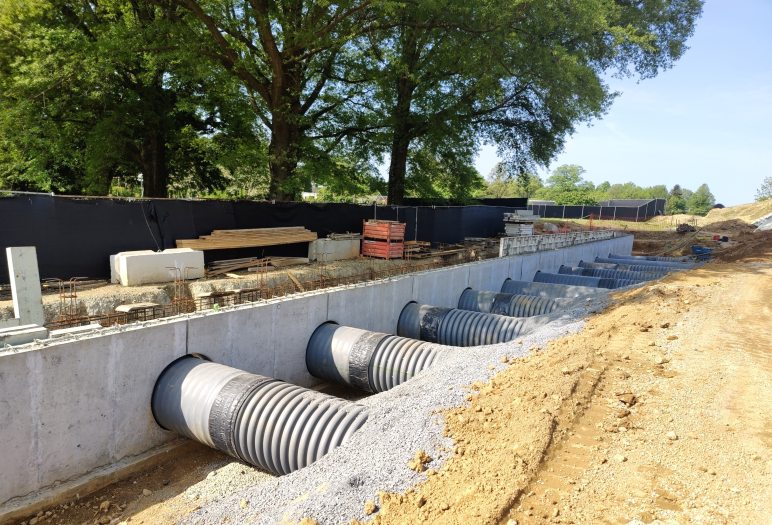
We are installing 10 Earth Ducts, each 36 inches in diameter, nearly a football field in length, and equipped with a fan, evaporative cooler, and heating element. As air travels through each duct, the surrounding soil lowers the incoming air temperature during warm weather and raises the temperature during cold weather. In more extreme weather, the evaporative cooling units or heating coils can provide additional tempering. The Earth Ducts will enter the Conservatory at basement level and ventilate directly beneath the walkways on the display level—without the need to heat or cool the entire volume of the West Conservatory. The tempered fresh air will also help control humidity, flushing humid air through the vents in the Conservatory roof.
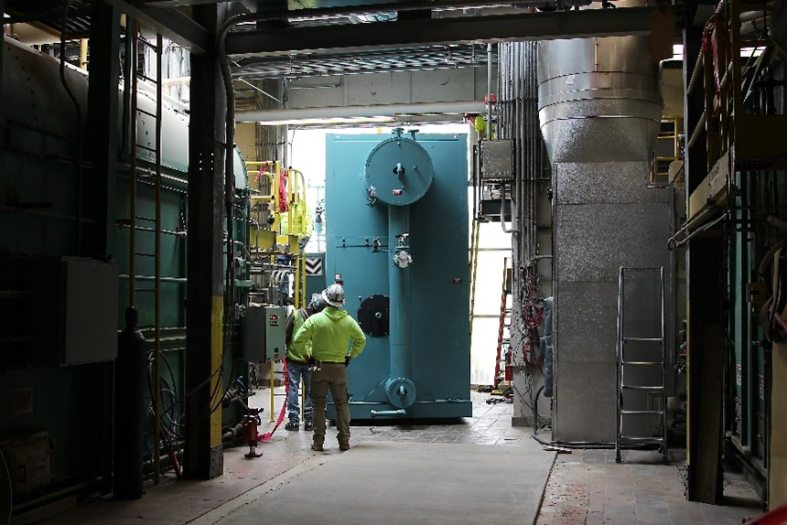
This month we placed a new, more efficient steam boiler, which can produce 20,700 pounds of steam per hour and is part of the system that heats our existing conservatory and production greenhouses, including the root zone heating that allows us to direct heat to the soil where it is most needed, instead of over-heating the ambient air. Steam and root-zone heating will be one of three systems used in our new West Conservatory, where we are also using sustainable geothermal and earth duct technologies to heat, temper air, and control humidity throughout the Longwood Reimagined site.
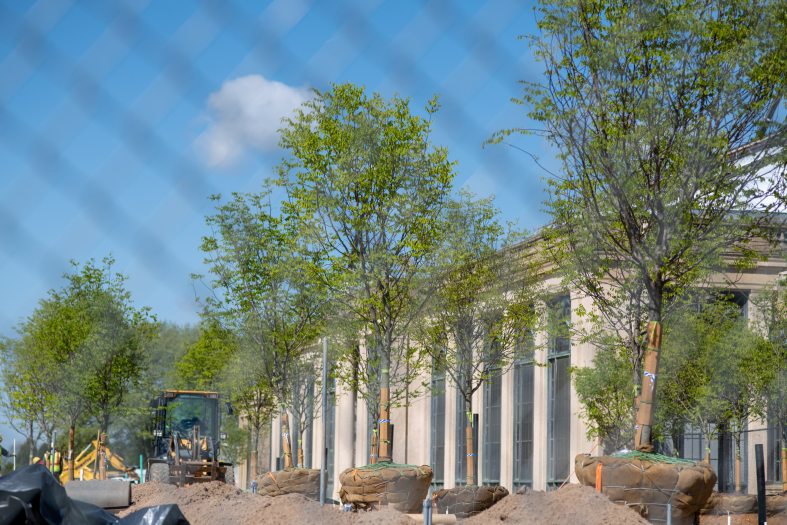
This week marks a major horticultural moment in our Longwood Reimagined project—our first planting! The 28 American yellowwoods (Cladrastis kentukea) that will grace the front of our Conservatory are being carefully positioned and planted by our staff and the talented team from Reed Hilderbrand Landscape Architects. We can’t wait for you to stroll among these beauties when we unveil Longwood Reimagined in late 2024.

ARCHITECT Magazine recently announced the winners of its 70th Annual Progressive Architecture Awards and our West Conservatory was among the recipients! The juried awards celebrate unbuilt projects around the world that promise to be transformative to the discipline of architecture. Our project was recognized for its “imaginative recasting of the traditional glass house form.” Congratulations to the architectural team at WEISS/MANFREDI. We are honored to be bringing your award-winning design to life.
We continue to make fantastic progress with our Longwood Reimagined project ... including our new Restaurant and Event Space, which is really beginning to take shape! We are now placing nearly 2,000 square feet of glass among the 18 arched openings and three central arched doors that make up the beautiful façade, offering guests spectacular views of our Main Fountain Garden. Following completion of the glass installation, we will turn our attention to the interior of this amazing new space. We can’t wait to welcome you to the new 1906 dining room and Fountain Room event space in fall 2024.
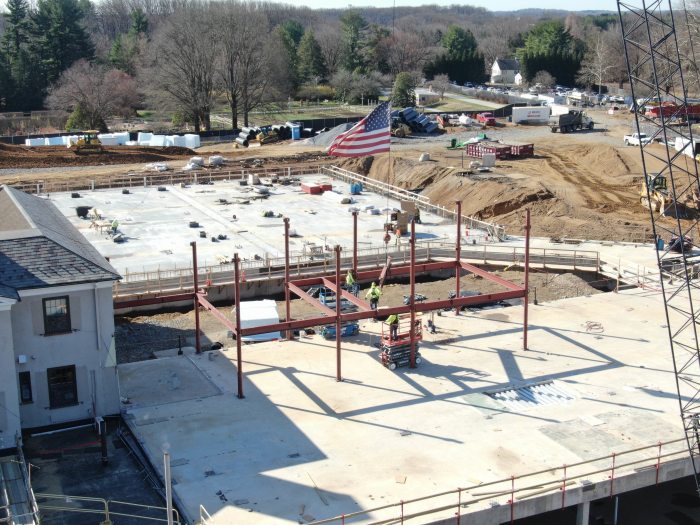
How do steel and glass come together to make a living, breathing building? Watch as the cathedral-like forms of our new West Conservatory are lifted into place, and go inside the project site with architects Michael Manfredi and Marion Weiss of Weiss/Manfredi Architecture as they give you an intimate view of the “most magic moment” of construction.
Videography by Freshfly. Photography courtesy of Tanglewood Conservatories from the publication, The Conservatory; Gardens Under Glass by Alan Stein and Nancy Virts.
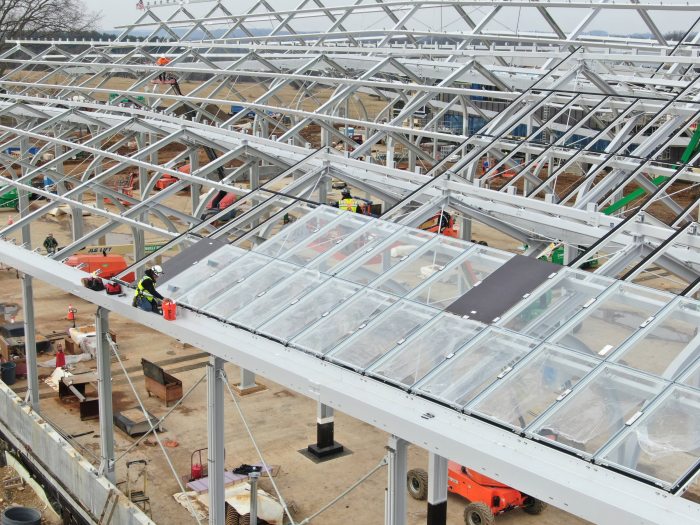
Last week we began installing the 1,958 panes of glass that will make up the roof and sides of our new West Conservatory! To ensure the optimal light level for healthy plants, we are using a low-iron, ultra-flat laminated glass that reduces reflectance and increases the amount of full-spectrum light transmitted into the building. Most of the panes are unique in size and shape, with the largest being 4 feet by 20 feet. In all, the glasshouse will feature more than 424 operable windows in the roof and walls, and the vertical glass walls will have a dot-frit pattern to protect birds from the ultra-clear glass. We expect installation to be completed in late spring.
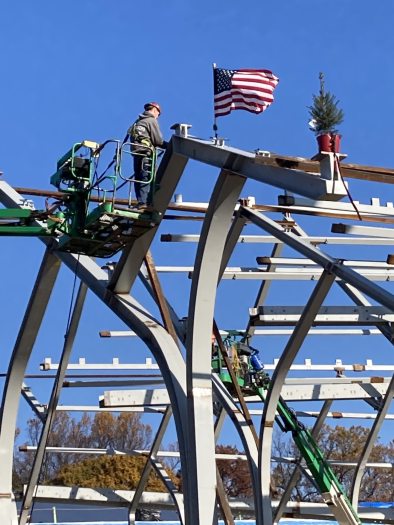
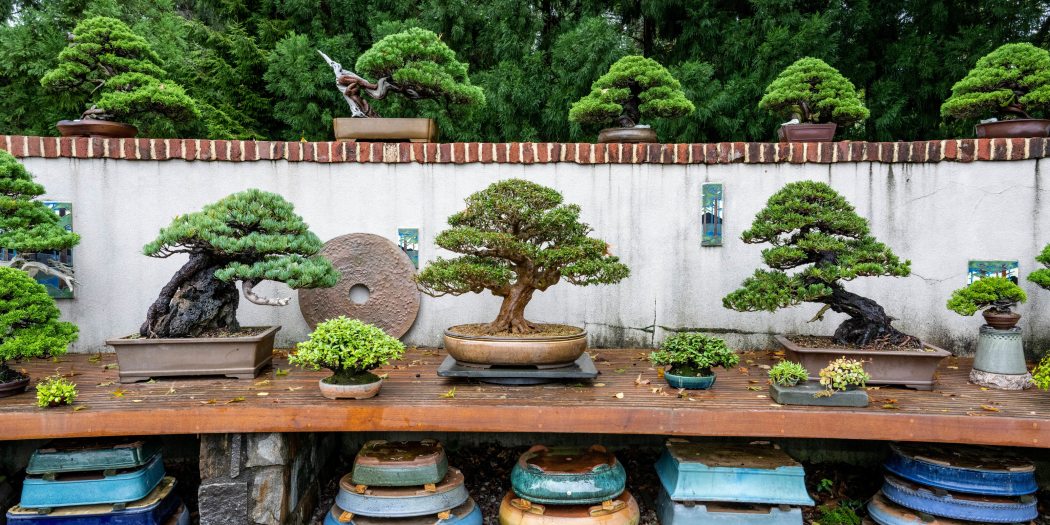
Doug Paul, the founder of The Kennett Collection—the finest and largest private collection of bonsai outside of Asia—has made a transformative gift and bequest to Longwood Gardens. The initial gift will include 50 bonsai over the next two years, as well as a yearly cash gift to support their maintenance. The bequest will gift 100 additional specimens—including kicho bonsai or Important Bonsai Masterpieces because of their beauty or rarity—and $1M for an endowment for the continued care of the collection, as well as additional acquisitions. The bequest will make Longwood the leading collection of bonsai trained in Japan on public view in the United States.
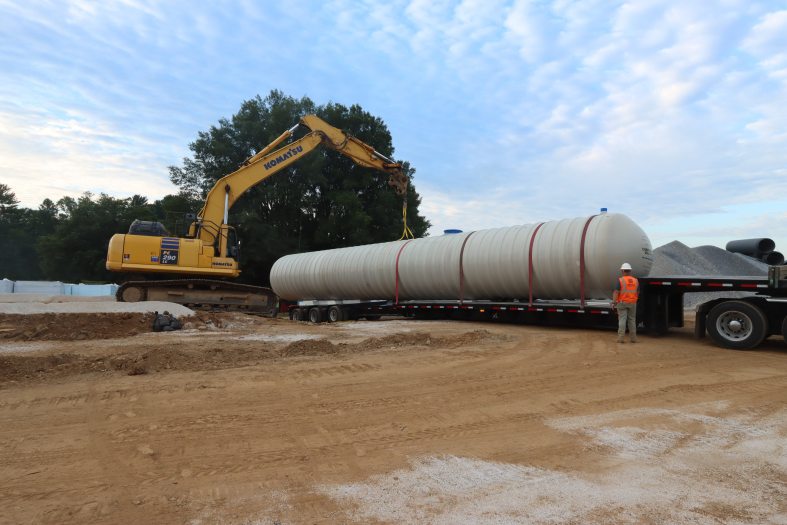
Six water tanks, measuring 60-feet-long and 8-feet in diameter, and each capable of holding 20,000 gallons, have arrived on site. The tanks are part of our sustainable rainwater capture system that will allow us to reuse collected rainwater from the roof of the new West Conservatory and Administration Building. Two of the tanks will hold collected rainwater, which is then treated, filtered, and stored in three of the remaining tanks for irrigation purposes; one tank will hold gray water. The six tanks will be buried on the south side of the West Conservatory.
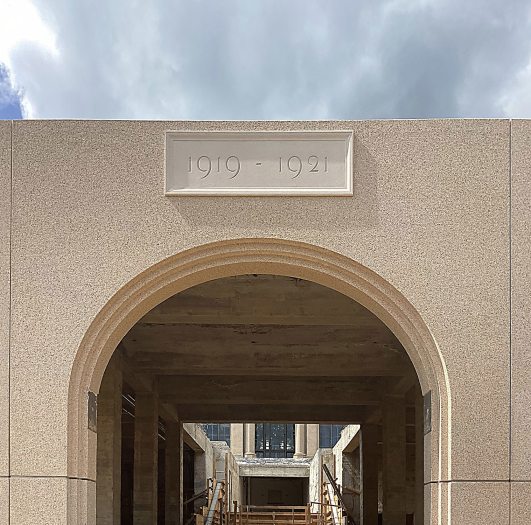
Last week we began installing the more than 50 pre-cast panels for the façade of our new Restaurant and Event Space. One special panel includes a replica datestone reminiscent of the stone placed during the Conservatory’s original construction. For structural integrity, the original stone was deconstructed during the project’s concrete work, so we duplicated it by taking clay impressions, which were then converted into a 3D model used to cut the new form with a Computer Numerically Controlled mill. The 15,000-lb. panel was carefully moved into its place of honor, a reminder of the legacy we steward each day at Longwood.
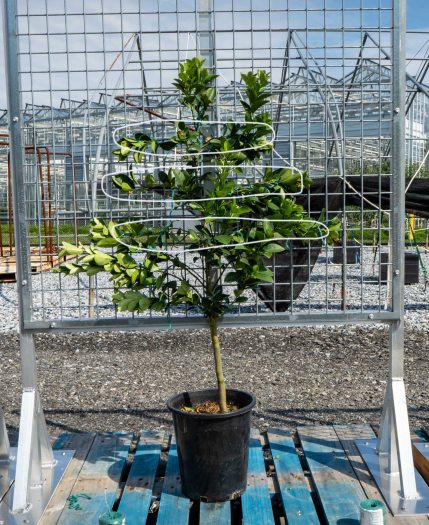
Our West Conservatory display will include two types of citrus grown in the espalier style. Espalier is the art of controlling a woody plant’s growth by pruning and tying its branches to a frame, often for fruit production. The plants are frequently shaped in formal, two-dimensional patterns, making espalier not only decorative, but a wonderful option for gardens in which space is limited. We will be growing Fingered Citron, also called Buddha’s-hand (Citrus medica var. sarcodactylis) and Fukushu kumquat (Fortunella obovata) in horizontal tiers, per the design intent.
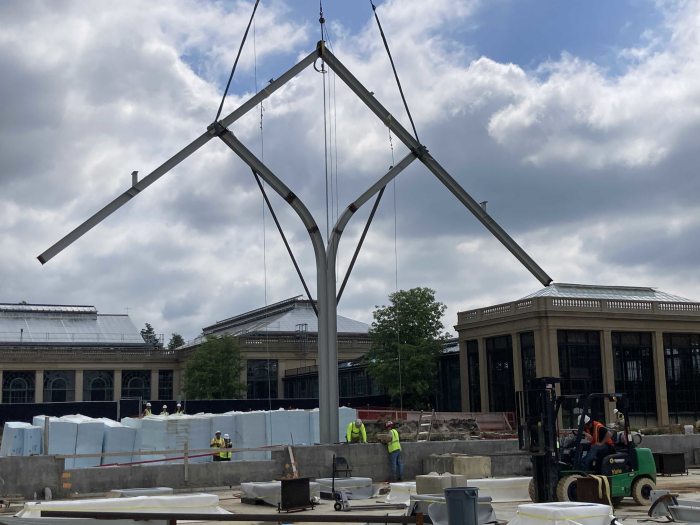
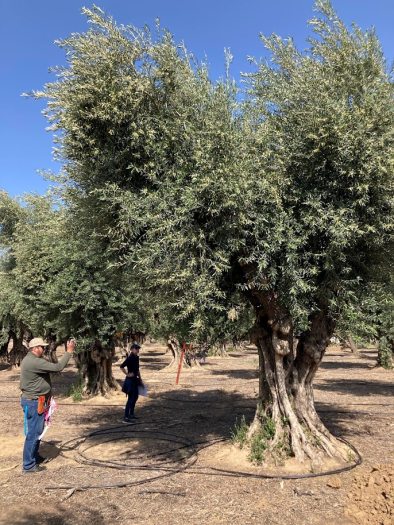
At Heritage Olive Trees in Napa, California, we tagged the seven olive trees that will grace the central island in our new West Conservatory, which will feature a Mediterranean plant palette. We measured the root flare during the selection process so the trees will thrive in the 7- to 9-foot-wide display containers we envision. These 80-100-year-old trees will grow in ground until spring 2024, when they will be potted into boxes for the truck ride across the country, arriving at Longwood in May 2024.

Marion Weiss and Michael Manfredi of WEISS/MANFREDI Architecture/Landscape/Urbanism talk about their visionary design for the West Conservatory. While in the lower level of the West Conservatory, Marion likened this part of the structure to an engine that will help bring to fruition the glorious gardens and amazing experiences that guests will enjoy on the level above, which will soon begin to take shape.
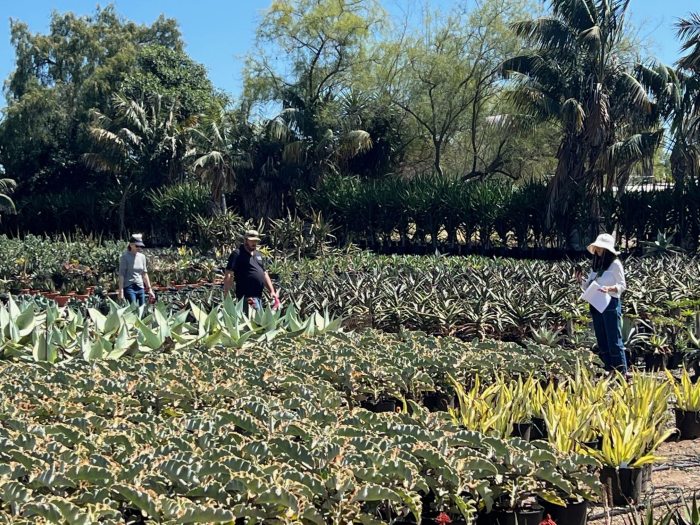
A team from Longwood, Bancroft Construction Company, and Reed Hilderbrand Landscape Architects headed to sunny California in search of plants for our new West Conservatory. We were selecting the “mid-story” plants that will grace this exciting new garden. From a design perspective, “mid-story” plants help tie together the larger plants (trees) and the building structure with the lower-level plant material.

Today we began lifting into place around 123 tons of steel for our new Administration Building—the home for our library, state-of-the-art classrooms, and offices. Most of the major columns and beams in this two-story structure will be erected over the next 3–4 weeks. Thanks to RC Fabricators in nearby Wilmington, DE, who is providing the steel.
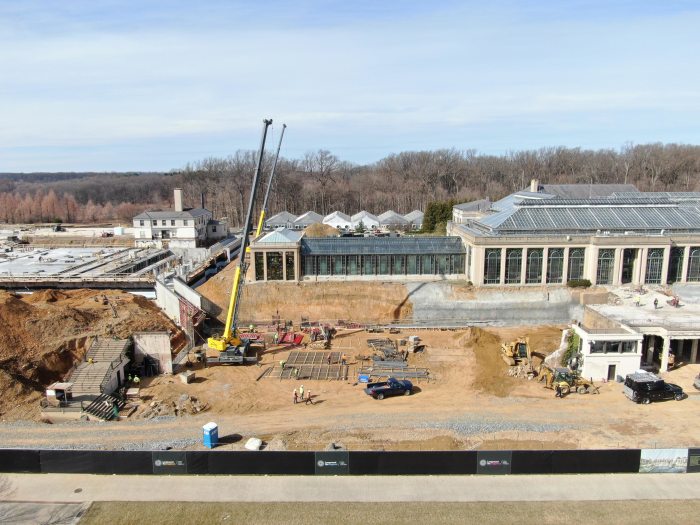
Work is underway to prepare for the installation of the footings, walls, and façade of our new Restaurant and Event Space. This image shows the walls of the concrete tunnel that will connect the new West Conservatory to the Restaurant. Meanwhile, rebar is being installed for the cast-in-place wall that will mark the back of the new space. That wall will extend the entire length of the Conservatory (439 feet).
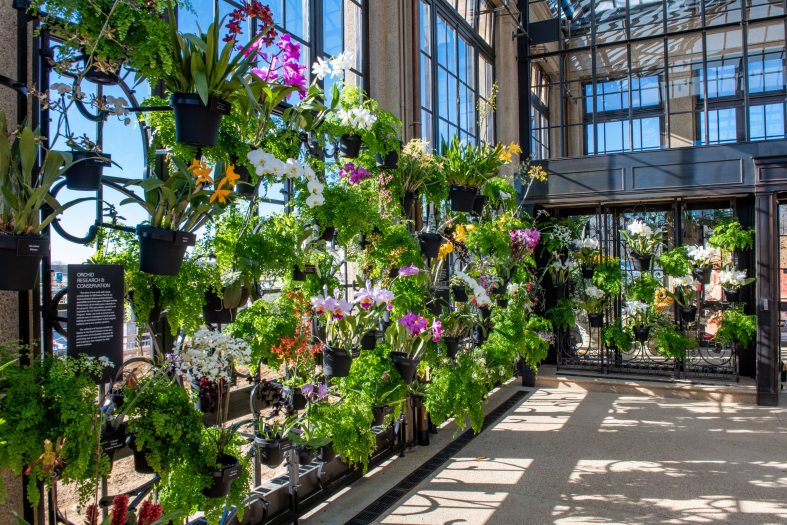
Our beloved, historic Orchid House reopened on February 26, revealing stunning new floral displays within a hundred-year-old structure that has been thoroughly restored and revitalized. The completion of the Orchid House restoration marks the first milestone achieved in Longwood Reimagined, a sweeping yet deeply sensitive transformation of 17 acres of the Gardens’ central visitor area.
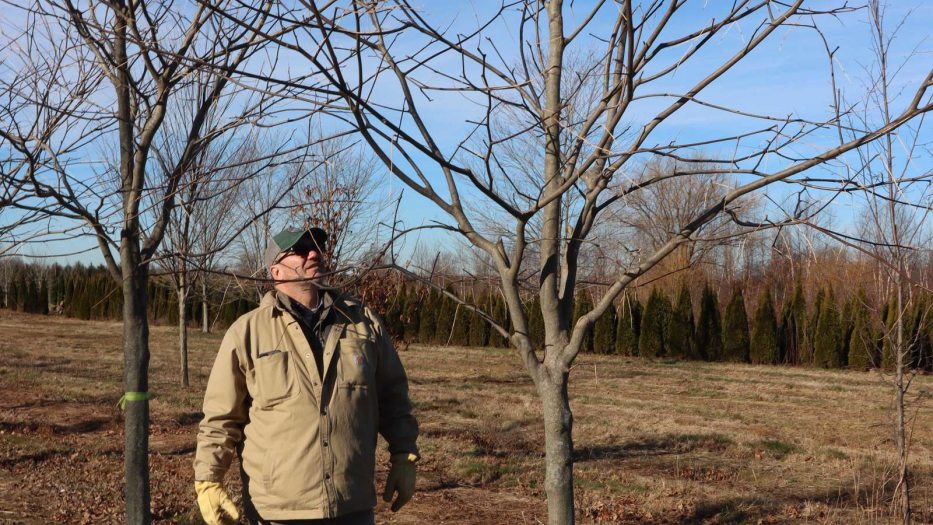
An allée of yellowwood (Cladrastis kentukea), which produces clusters of fragrant white flowers, is planned for the front of our Main Conservatory. Here Longwood’s Troy Sellers evaluates specimens from Garden State Nursery in New Jersey.
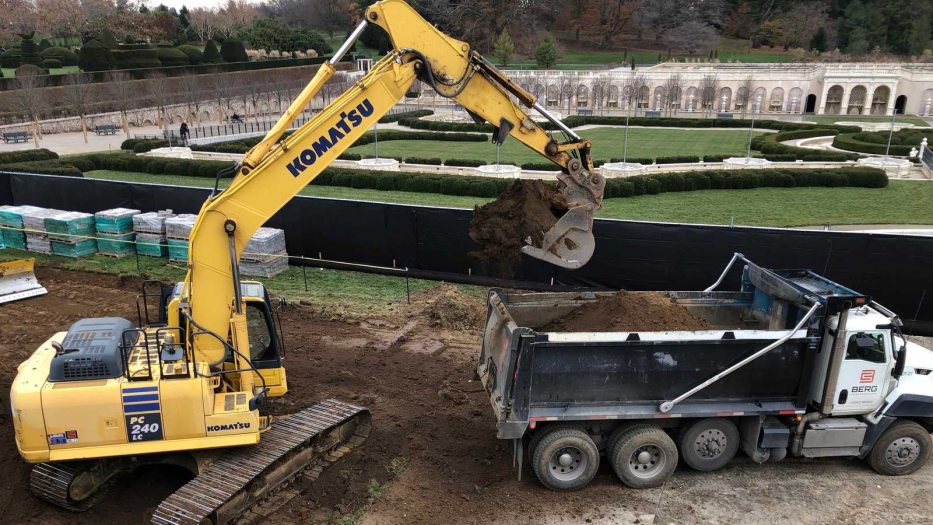
Two types of native soil are being excavated and saved from the site—topsoil and subsoil. These two soil components are being moved to a mixing site on our property where they are being mixed, tested, and amended if needed to ensure it is the ideal composition for the meadow and naturalized areas of Longwood Reimagined.
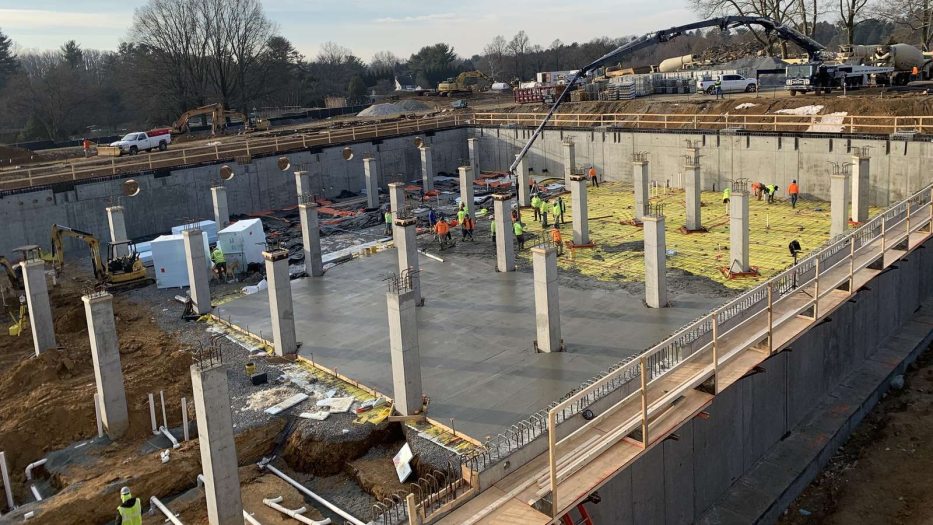
The first section of the lower level floor of our new 32,000 sq. ft. West Conservatory takes shape. To prepare for the January 13 pour of 150 cubic yards of concrete, earth had to be excavated to grade, foundations poured, plumbing and electrical conduits installed, and reinforcing steel set.
Watch More Project Updates
See our 32,000-square-foot West Conservatory take shape as 331 tons of steel and nearly 2,000 panes of glass bring this amazing structure to life. Videography by Freshfly. Photography courtesy of Tanglewood Conservatories from the publication, The Conservatory: Gardens Under Glass by Alan Stein and Nancy Virts.
We’re thrilled to share that over the course of the next two years and leading up to the opening of Longwood Reimagined: A New Garden Experience, The Kennett Collection—the finest and largest private collection of bonsai and bonsai-related objects outside of Asia—will give 50 bonsai to Longwood.
Visit the History and Artistry of Our Orchid House
Dive Deeper on Our Blog
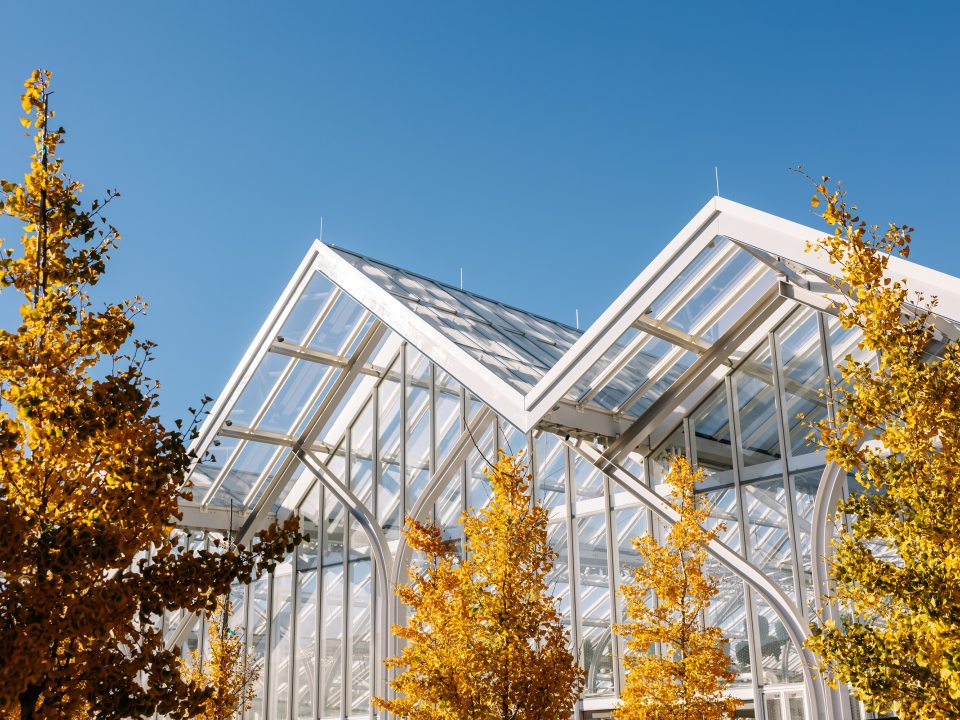
The Inside Story: Longwood Reimagined
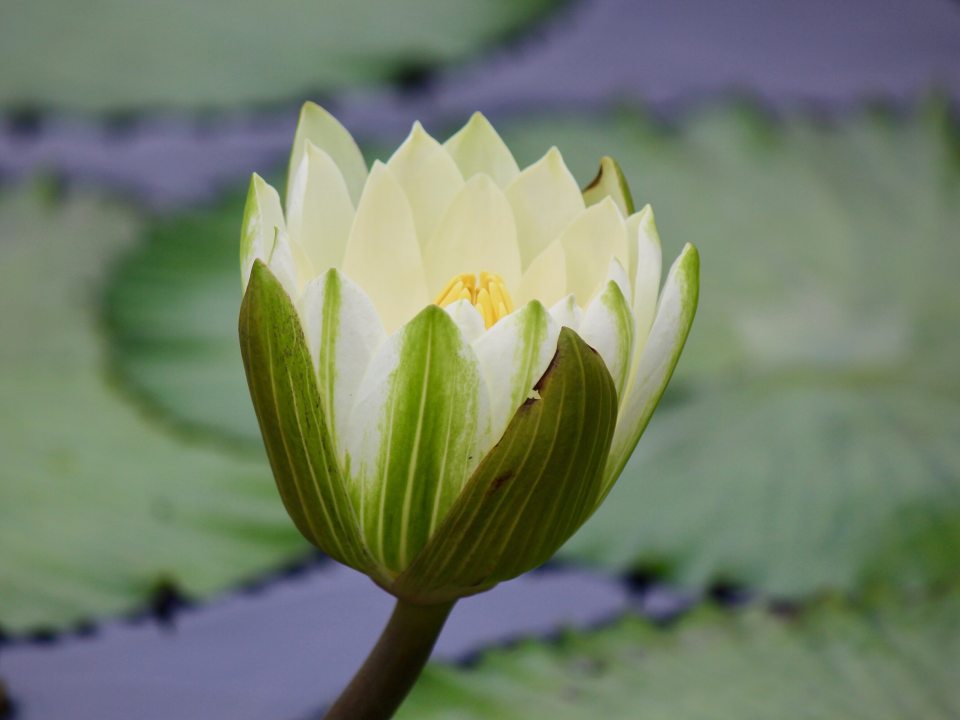
A Dazzling Return: Our Waterlily Court
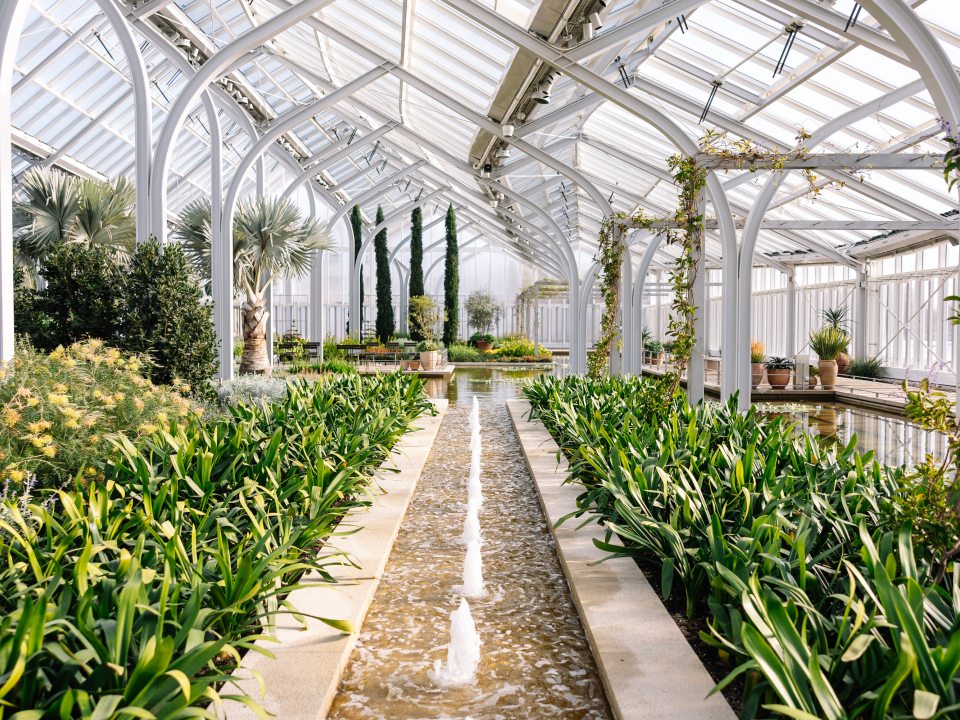
High Tech Meets Happy Plants: Our West Conservatory
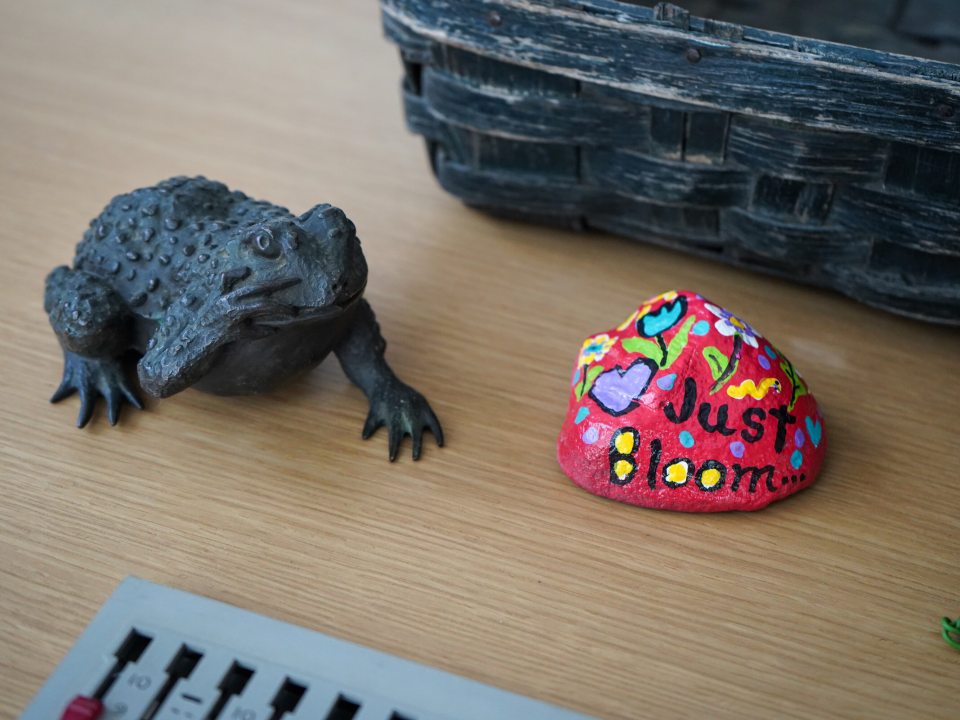
Objects that Tell a Story
